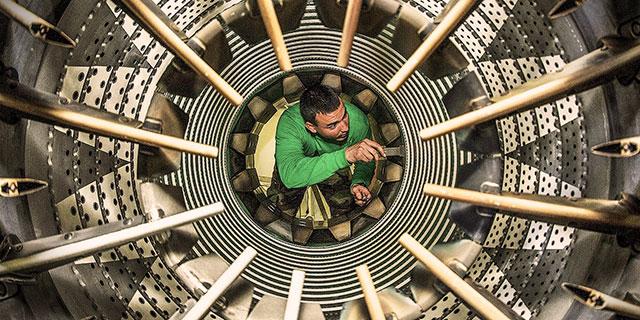FILTER SALES
CATALOG
ACCESSORIES
Aerospace & Defense

The manufacturing of aircraft parts typically starts with the machining of parts using a CNC machine generating mist and smoke from a coolant. The airborne mist can become a breathing hazard in a manufacturing shop. Airborne mist can also create a large maintenance issue with other machines because the mist can severely damage the electronics and the machine's operation. If too much mist settles on the shop floor the floor will become extremely slippery creating a very dangerous work environment prone to accidents and injury.
Another manufacturing process within the aerospace and defense industry that can present a problem with airborne particulate includes grinding, deburring, and polishing of many different sized parts, shapes, and materials such as steel, aluminum, titanium, magnesium, etc. Aluminum, titanium, and magnesium are flammable metals, and the dust from these materials is extremely explosive. The process of welding of various materials such as aluminum, manganese, chromium, and other materials produces fumes that are very hazardous to breathe and causes cancer.
A large concern with Aerospace and Aviation is the production of Hexavalent Chromium which can be generated by the welding of Stainless Steel parts or could be found in the painting of Aerospace parts where the paints have Chromate in them. When you work on these parts such as grinding or sanding you are exposed to Hexavalent Chromium which is very hazardous.
Aerospace & Defense Industrial Filtration Systems
- Combustor — Grinding and Buffing of Flammable Metals, aluminum, titanium
- APB Downdraft — Grinding and Buffing of non-flammable dust such as steel
- SPC — welding of small parts
- VCF & HCF — welding of larger parts
- PBM — Grinding and polishing of large parts
- Mist and Smoke Collectors — CNC Wet Machining
- PFC and Portable Fume Booth — Odor and vapor
